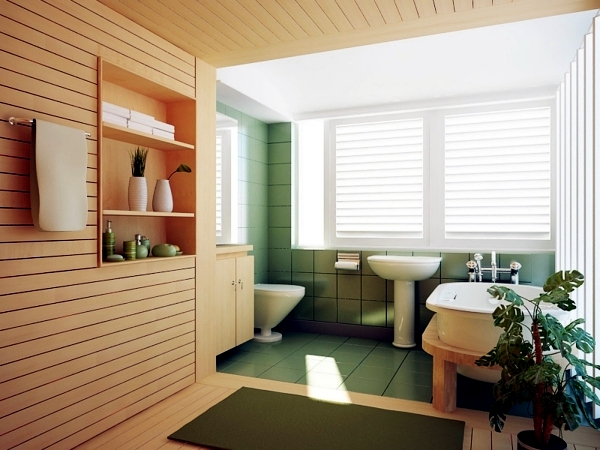With the growing concerns about the environment and its impact on our planet, many homeowners are looking for ways to make their homes more sustainable. One area that is often overlooked is the bathroom. Bathrooms are typically one of the most water-intensive areas in a home, and traditional bathroom fixtures and materials can have a significant environmental impact.
Fortunately, there are many ways to make your bathroom more eco-friendly. From water-saving shower heads to sustainable materials, various options are available to help you reduce your bathroom’s environmental impact. Let’s cover some of the most popular eco-friendly toilets remodel options, including stand-alone baths, and discuss the benefits of each.
This blog post aims to provide homeowners with information about eco-friendly bathroom remodel options and how to incorporate them into their home improvement projects. From water conservation to sustainable materials and eco-friendly stand-alone baths, this post will cover the different ways to make your bathroom more bearable and the potential benefits you can gain.
Explanation of the water footprint of traditional bathroom fixtures, such as toilets and showerheads, can use a significant amount of water. Toilets alone can account for up to 30% of a home’s total water consumption.
Consider installing low-flow toilets and showerheads to reduce water consumption in your bathroom. These fixtures are designed to use less water without sacrificing performance.
One of the most effective ways to save water in your bathroom is to install a water-saving showerhead. These fixtures can reduce water usage by up to 50% compared to traditional showerheads, which can save you money on your water bill and reduce your environmental impact.
Traditional bathroom materials, such as ceramic tiles and synthetic flooring, can have a significant environmental impact due to the energy and resources required to produce and transport them.
To reduce the environmental impact of your bathroom remodel, consider using eco-friendly materials, such as reclaimed wood, bamboo, and cork. These materials are renewable, sustainable, and often have a lower carbon footprint than traditional materials.
Sourcing sustainable materials for your bathroom can be challenging. One way to ensure that your materials are eco-friendly is to look for certifications such as FSC (Forest Stewardship Council) or LEED (Leadership in Energy and Environmental Design). Additionally, you can also look for local materials to reduce transportation emissions.
Traditional bathtubs can consume a significant amount of water, as they are typically filled to the brim with water for each use.
An eco-friendly alternative to traditional bathtubs is a stand-alone bath, such as a Japanese soaking tub. These tubs are more profound and smaller and use less water, as they are only filled to a level that covers the body.
Compared to traditional bathtubs, stand alone baths have a lower environmental impact, as they use less water and energy to heat the water. Additionally, the smaller size of the stand-alone baths means they can be made from more sustainable materials and have a lower carbon footprint during transportation.
Traditional bathroom lighting, such as incandescent bulbs, can consume significant energy and have a short lifespan.
To reduce the energy consumption in your bathroom, consider using energy-efficient lighting options such as LED bulbs or incorporating natural light through skylights or windows. LED bulbs consume less energy and have a longer lifespan than traditional incandescent bulbs.
Incorporating natural light into your bathroom remodel can significantly reduce energy consumption and create a more pleasant and inviting space. Some tips for incorporating natural light include:
- Installing skylights or windows.
- Using light-colored paint or tile.
- Choosing reflective surfaces like mirrors.
Additionally, consider using window treatments that allow natural light to filter in while providing privacy.
We covered a variety of options for making your bathroom more eco-friendly, including water conservation, sustainable materials, stand-alone baths, and energy-efficient lighting. Each option can help reduce your bathroom’s environmental impact and save you money on utility bills.
In addition to the environmental benefits, an eco-friendly bathroom can offer cost savings and improved indoor air quality in addition to the ecological benefits. You can save money on your utility bills by reducing your water and energy consumption. And by using sustainable materials, you can improve the indoor air quality in your bathroom, making it a healthier and more pleasant space for you and your family.
We hope this article has inspired you to consider eco-friendly options in your next bathroom remodel. Not only will you be helping the environment, but you’ll also be improving your indoor air quality and saving money on your utility bills. With various options available, there’s never been a better time to make your bathroom more sustainable.

